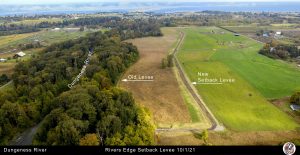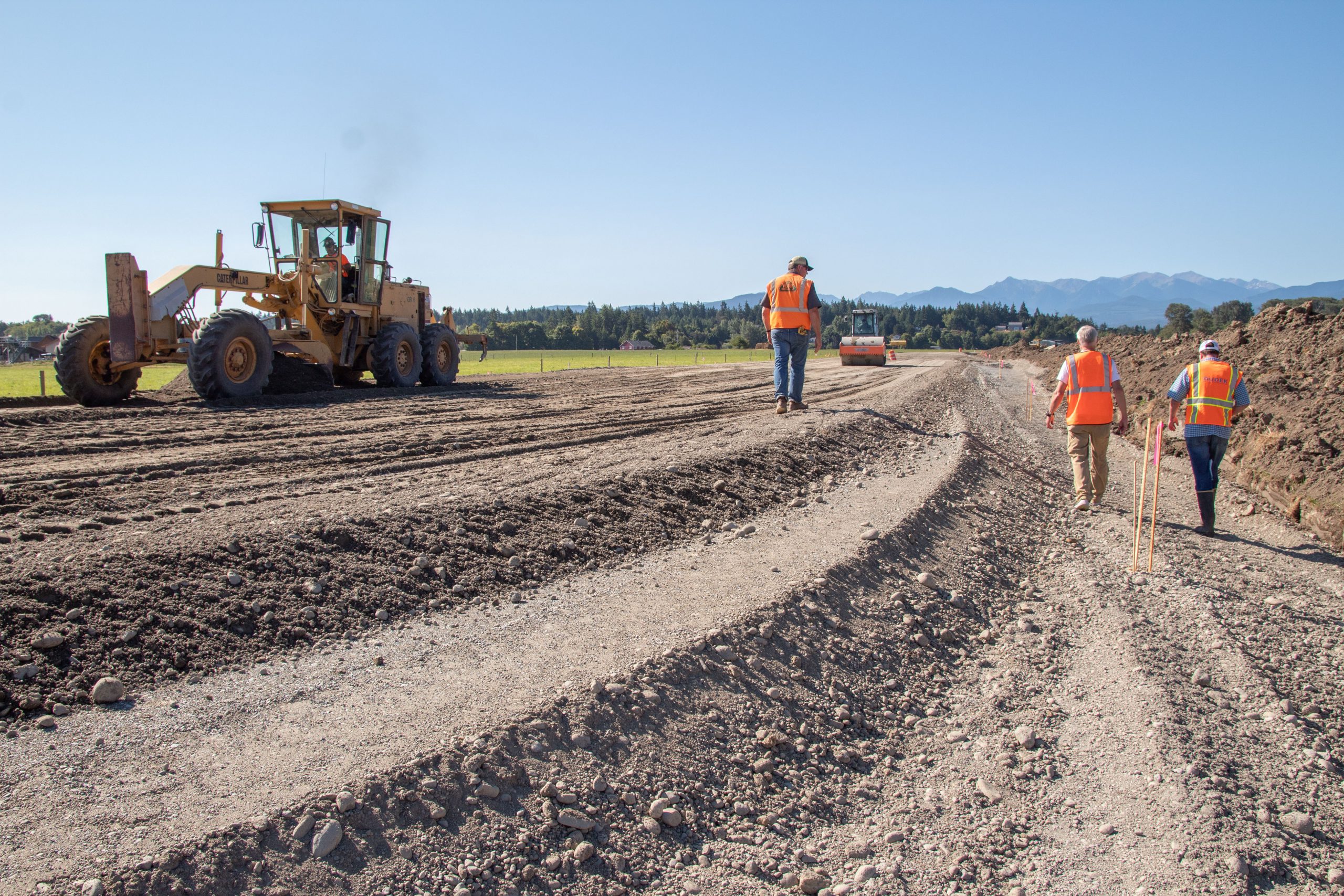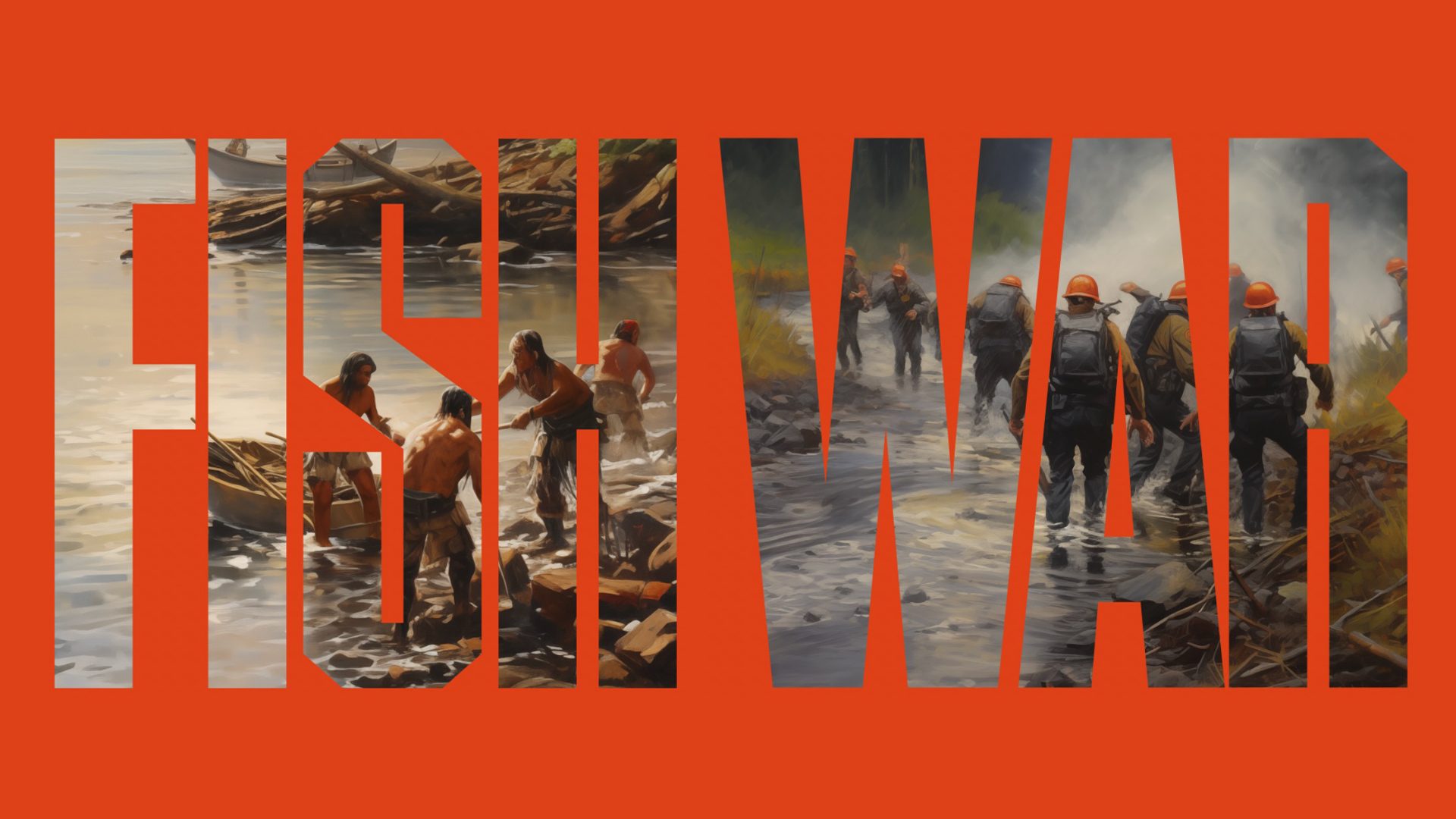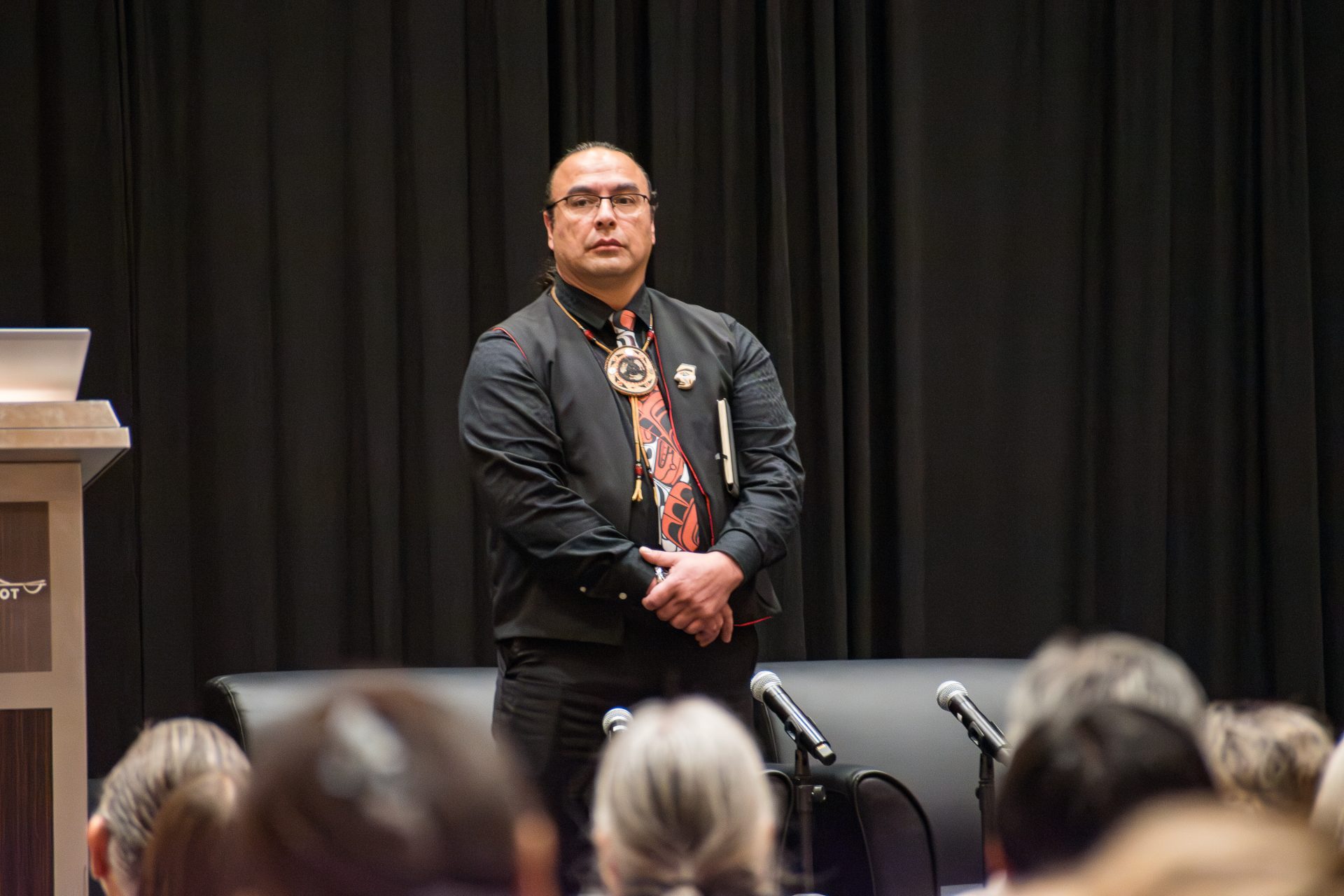The Jamestown S’Klallam Tribe’s new setback levee on the Dungeness River can withstand a 10,000-year flooding event – an amount of water equal to a 100-year flood in the Dungeness River, times four.
“This is the bulldog of river levees,” said Randy Johnson, the tribe’s habitat program manager. “It’s short, squat and powerful.”
It is also 5,000 feet long and beefy enough to withstand a river as big as the Mississippi, he said.
The tribe constructed the new levee on 65 acres of land they purchased in 2020 – 25 acres from Dungeness Valley Creamery and 40 acres from the McLane-Wallacker Trust Farm.
The tribe’s new levee will replace the old one near the bank of the river that restricts river flow, eliminates floodplain connectivity and damages salmon habitat.

Natural resources managers have long considered the old levee to be one of the most egregious human impacts to Dungeness River’s salmon habitat, Johnson said. The new levee will nearly quadruple the area in which the river can move and spread out.
The new levee is located about 550 feet farther away from the river than the old levee. The land between the levees is historic floodplain that settlers cleared and converted to agricultural land in the early 1900s.
In addition to reconnecting the river with former floodplains, the newly opened area will allow new salmon habitat to develop, reduce channelization and high-water velocities, allow opportunities for wood accumulation, re-establish riparian forests and allow public access to the river. The levee is 12-feet-wide at the top and is open to the public for hiking.
In 2022, the tribe will remove the old levee, construct five logjams in a side channel and plant native vegetation in the newly opened floodplain.
Funding for this project comes from a combination of tribal grants through the Washington State Recreation and Conservation Office, including salmon grants and monies from the Pacific Salmon Treaty negotiations provided through NOAA; the state Department of Ecology’s Floodplains by Designs program; EPA’s Brownfields Program; matching monies from U.S. Fish and Wildlife Service; and land purchase money from fundraising efforts by project partner North Olympic Land Trust.
Staff from the construction company DelHur and from the Jamestown S’Klallam Tribe visit the levee construction earlier this summer. Photo: Tiffany Royal





